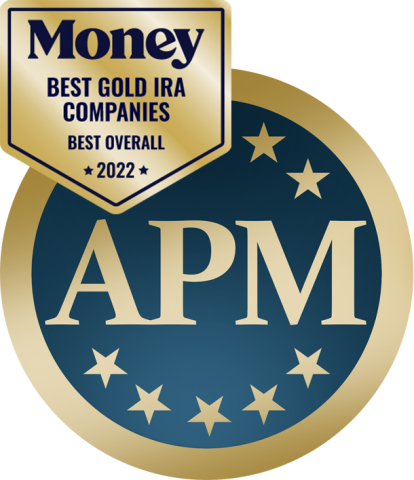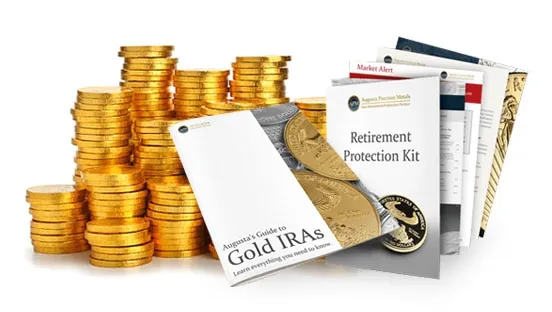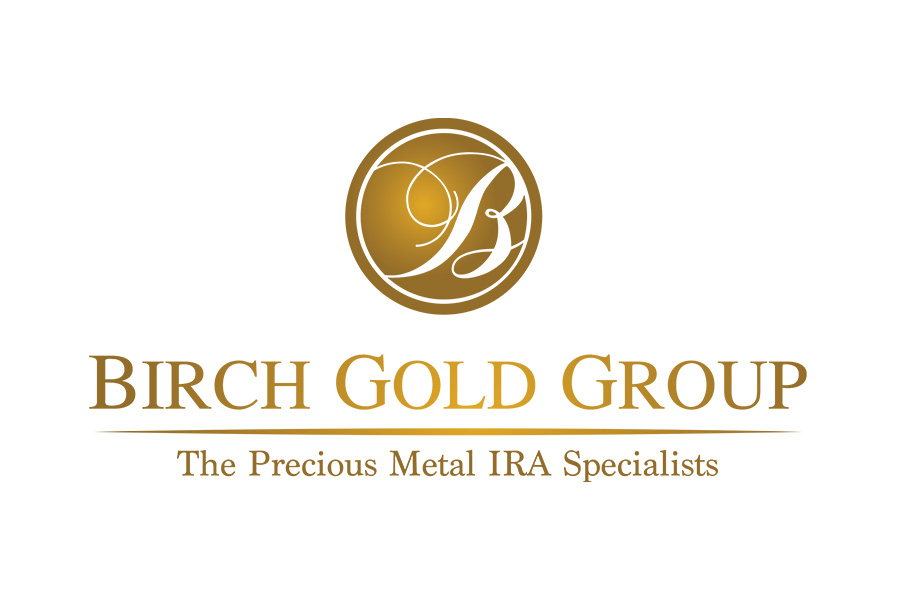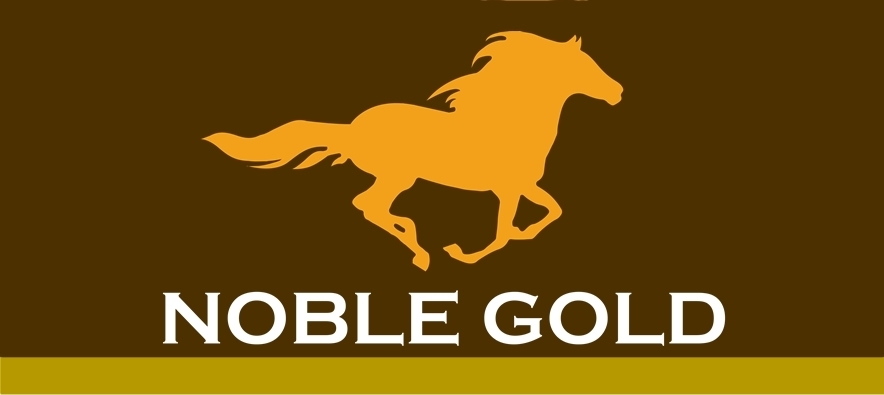Affiliate Disclosure: The owners of this website may be paid to recommend the following companies: Goldco, Augusta Precious Metals, Noble Gold Investments, and Birch Gold. The content on this website, including any positive reviews of the mentioned companies, and other reviews, may not be neutral or independent.
Table of Contents
Gold IRA Rollovers – What You Need to Know
Gold IRA rollovers guide. A gold IRA rollover can be an excellent way to diversify your retirement portfolio, allowing you to invest in something outside of stocks and bonds. Gold can be volatile at times, but with the proper planning it can give you the return on investment you’re looking for in a retirement account like an IRA. The following guide on gold IRA rollovers can help you get started with your gold IRA rollover, whether it’s your first or your 10th.
Gold IRA Rollovers Guide

Introduction
In recent years, precious metals, including gold and silver have experienced a tremendous rise in popularity. Many people have invested in gold bullion, owning physical bars of gold or silver coins which they store themselves at home or with a safety deposit box. Now there is another option for precious metal investors that was not previously available: A self-directed Precious Metals IRA. The Gold IRA Rollover Guide will discuss: What exactly are Precious Metals IRAs? How do they work? Who can set one up? What are some examples of how these may be used?
A self-directed Precious Metals IRA can be set up with a Gold IRA rollover company. A gold coin Precious Metals Individual Retirement Account (IRA) is a type of retirement plan that allows you to store your physical gold and silver bullion, which may include Canadian Maple Leaf coins, US American Eagle coins, or other internationally recognized gold bullion coins, as well as any silver products such as bars or rounds in an IRA-registered account. As long as it is 100% physical gold or silver bullion (not paper precious metals assets), it can be stored in your Precious Metals IRA.
The Gold Coin IRAs benefits will be expanded upon throughout The Gold Coin IRAs Guides.
To learn more about Precious Metals IRAs and Gold IRAs, as well as how you can open one up for yourself, contact an expert gold rollover IRA representative. Our Gold Coin IRAs Guides will discuss: Why are these different from other investments? How does a self-directed Precious Metals Individual Retirement Account work? Who should consider investing in a Gold Coin IRAs versus other options? What are some of its key benefits and drawbacks? A Gold IRA rollover company can help answer all of your questions about setting up a precious metals investment plan.
Gold IRA Rollovers Guide

What is a Gold IRA Rollover?
A gold rollover is a way of transferring funds from your existing retirement account, like a 401(k) or traditional IRA, into an Individual Retirement Account (IRA) that holds physical gold. As an investor, you can own physical gold inside of an individual retirement account and defer taxes until later on in life when you withdraw money from your rollover fund. In other words, investing in a Gold IRA rollover lets you combine capital for growth with capital for protection.
Top Gold IRA Companies
Our recommended Providers are researched and vetted by us and many top consumer organizations. This is the short list of the most consistent companies we could come up with. Request information from them below.
#1: Augusta Precious Metals
Our Rating: 10/10
Pros
✅ ZERO complaints with the BBB and BCA
✅ Highest reputation and customer satisfaction in the industry
✅ Non-commissioned sales team
✅ Transparent pricing with up to 10 years of fees waved – with qualifying purchase.
✅ Hall of fame quarterback, Joe Montana was an actual customer before becoming their spokesperson!
Get a free gold IRA Kit now!
Call: 1-855-470-4636
#2: Birch Gold Group
Our Rating: 9.9/10
Pros
✅ Great company commitment to education and communication
✅ Impeccable customer service
✅ Silver, gold, platinum and palladium available
Cons
❌ Signup process can only be done thought a specific link
❌ Certain fees are not disclosed up front
❌ No buyback guarantee of precious metals
#3: Noble Gold Investments
Our Rating: 9.6/10
Pros
✅ One of the best no questions asked buyback programs in the industry
✅ Free delivery of your precious metals to your door at any time
✅ Over 20 years of experience in the precious metals industry
✅ Gold, silver, platinum, and palladium available
✅ One of the lowest barriers to entry – ideal for smaller investors
Cons
❌ High annual fees for low balances
Gold IRA Rollovers Guide: What is an IRA?
An individual retirement account (IRA) is a type of savings plan designed for people with earned income. Retirement accounts come in two forms: pre-tax and post-tax. With a gold rollover, you get to defer taxes until you begin withdrawing money from your account (as opposed to post-tax options such as 401(k)s). So, in essence, a gold rollover lets you put capital into an IRA at one tax rate and then withdraw it later at another. This can be very beneficial for investors who may be in higher tax brackets today but expect to be lower in retirement. That’s because they’ll pay less taxes on their profits now when their money is still growing, than if they were subject to regular income tax rates later on.
The IRS has clear rules about who can contribute and how much, but in general, anyone with earned income is eligible. If you have questions about whether or not you qualify, consult your tax advisor. There are no minimum required distributions (MRDs) for rollover accounts, which is a major benefit of gold IRAs over regular IRAs. MRDs apply only to pre-tax IRAs like traditional and Roth accounts. With a rollover account you get more flexibility in how and when you use your money; it’s not tied down by rigid cash-out rules.
Gold IRA Rollovers Guide

Gold IRAs and Taxes
Individual Retirement Accounts (IRAs) are tax-advantaged investment accounts that are used by millions of Americans in order to save for retirement. When you use a gold IRA, you’ll be able to avoid paying capital gains taxes on your investments. Plus, if you’re over 50, you can make extra contributions into your account and lower your tax bill further. Many people don’t know that when they have an existing Individual Retirement Account (IRA), they can roll their money over into another type of account without having any penalties or fees imposed on them.
A gold IRA is a type of Individual Retirement Account (IRA) that allows you to purchase precious metals, such as gold and silver, for your retirement savings. With a gold IRA rollover, you can take advantage of a valuable tax break: you won’t have to pay capital gains taxes on any profits from your precious metal investments. Another benefit of rolling over your old account into a gold one is that once you reach age 50, you can make extra contributions each year into your account.
The minimum you can contribute into a gold IRA is just $100 and there’s no maximum contribution limit. As long as you qualify to make Roth or Traditional contributions, you can roll over your current retirement savings into a gold-backed account. One of the biggest benefits of a gold IRAs are that they help shield you from ever having capital gains taxes imposed on your precious metal investments. When planning for retirement, it’s always good to diversify your portfolio with different assets and precious metals, including gold and silver, are an excellent choice because they have little downside risk and provide protection against inflation in today’s uncertain economy.
Gold IRA Rollovers Guide
What Type of Gold Should You Buy?
There are three main types of gold to consider when rolling over your IRAs: physical gold bullion (gold bars or coins), paper gold (gold exchange-traded funds, or ETFs) and even gold certificates. When deciding which type of gold is right for you, take into account a few factors: storage costs, insurance fees, liquidity and ease of trade. Gold can be stored in secure vaults around the world, so storage costs shouldn’t be an issue if you go with physical gold. Gold ETFs are very liquid and can be traded like stocks through most brokerage firms—plus, commissions on paper holdings tend to be low. Paper holdings do come with insurance premiums that cost about 0.5% annually (1% is more common).
Gold certificates, on other hand, are rarely offered by providers and only come with small denominations. Certificates also don’t come with insurance and aren’t as liquid as ETFs or bullion. Gold certificates can be ideal for large sums of money—say, if you’re rolling over a 401(k) or an individual retirement account (IRA)—since they do offer some protection against theft. But unless you have more than $100,000 to roll over, it’s not worth your time and effort to buy gold certificates instead of ETFs or bullion.
Our Top Recommended Gold IRA Company

Each type of gold has its pros and cons, but in general, you should use gold ETFs or bullion if you want easy access to your funds. Certificates are a good option for large sums of money that you plan on holding long-term (so as not to pay storage fees). Physical gold is an ideal choice if your goal is diversification. If you’re planning on selling a portion of your gold holdings in order to raise cash quickly, physical gold may not be ideal since paper assets trade more quickly. Also, make sure that any certificates include unique serial numbers that can help reduce fraud when you sell.
The Best Time to Transfer Your Gold into an Account
If you want to set up a gold IRA rollover, then you might be wondering when is the best time to transfer your assets into a retirement account. While there’s no one answer for everyone, it’s generally agreed that transferring your assets around mid-April or mid-October is best. Why? During these times, prices tend to be at their lowest and thus you get more bang for your buck. As gold prices rise from January through September, having some holdings in an account can help offset any losses due to inflation; conversely during December through March – as prices peak during holidays and spendthrift seasons – if you have holdings in an account then you benefit financially by being able to avoid paying taxes on profits.
While there’s no single correct time to transfer your gold into an account, it’s important that you start now. Before moving forward, consider your short-term goals and long-term plans for your investments. Do you want access to your money at any time? Or would you rather have your assets available for a more financially secure future? If you need liquidity right away, then opening a standard brokerage account might be more suitable than a retirement account because such accounts can provide better price flexibility while still being relatively safe. But if you want somewhere where assets are held in safer storage and easy-to-access funds aren’t needed immediately, then a gold IRA rollover might be best.
Final Thoughts On Gold IRAs And IRS Requirements
Gold IRAs are a great investment tool, but they do come with certain restrictions and requirements. While you can find detailed information on IRS regulations, there is also a lot of misleading or incorrect information. This guide will provide you with all of the details about Gold IRAs and allow you to make an informed decision about your investment. If you have any questions or concerns about what is discussed in these pages, please consult with a financial advisor that specializes in retirement planning and who has experience working with gold investments before making any decisions.







Pingback: A Step by Step Guide: Gold IRA Rollover
Pingback: How to Set Up Your Own Gold IRA Account
Pingback: Can You Put Gold in an IRA? - Gold IRA Rollover
Pingback: How to Transfer 401k to Gold IRA - Gold IRA Rollover
Pingback: Investing in Gold IRA Funds - Gold IRA Rollover
Pingback: Gold IRA Rollover Guide - Gold IRA Rollover